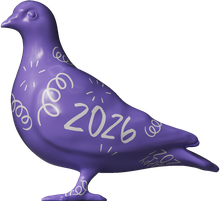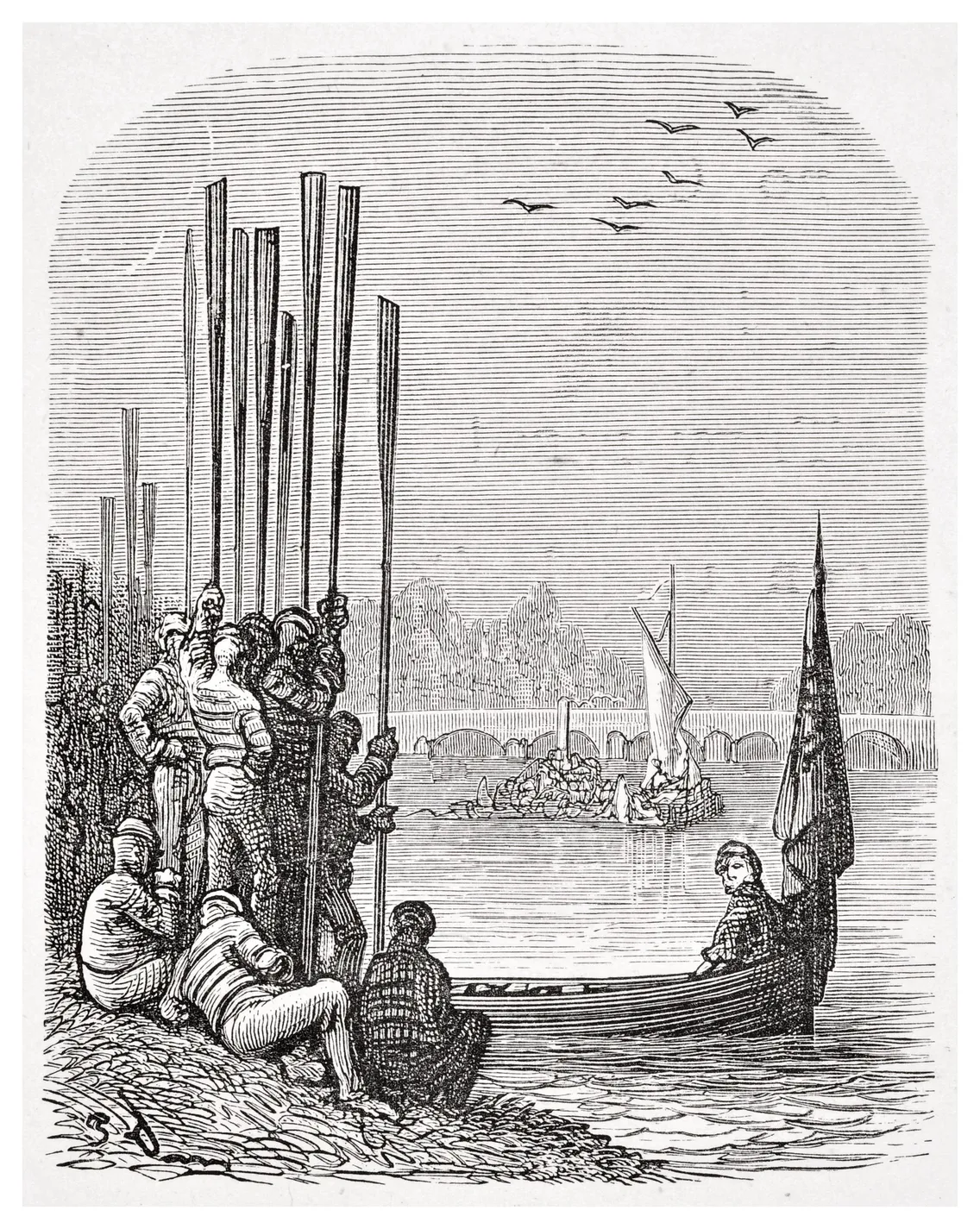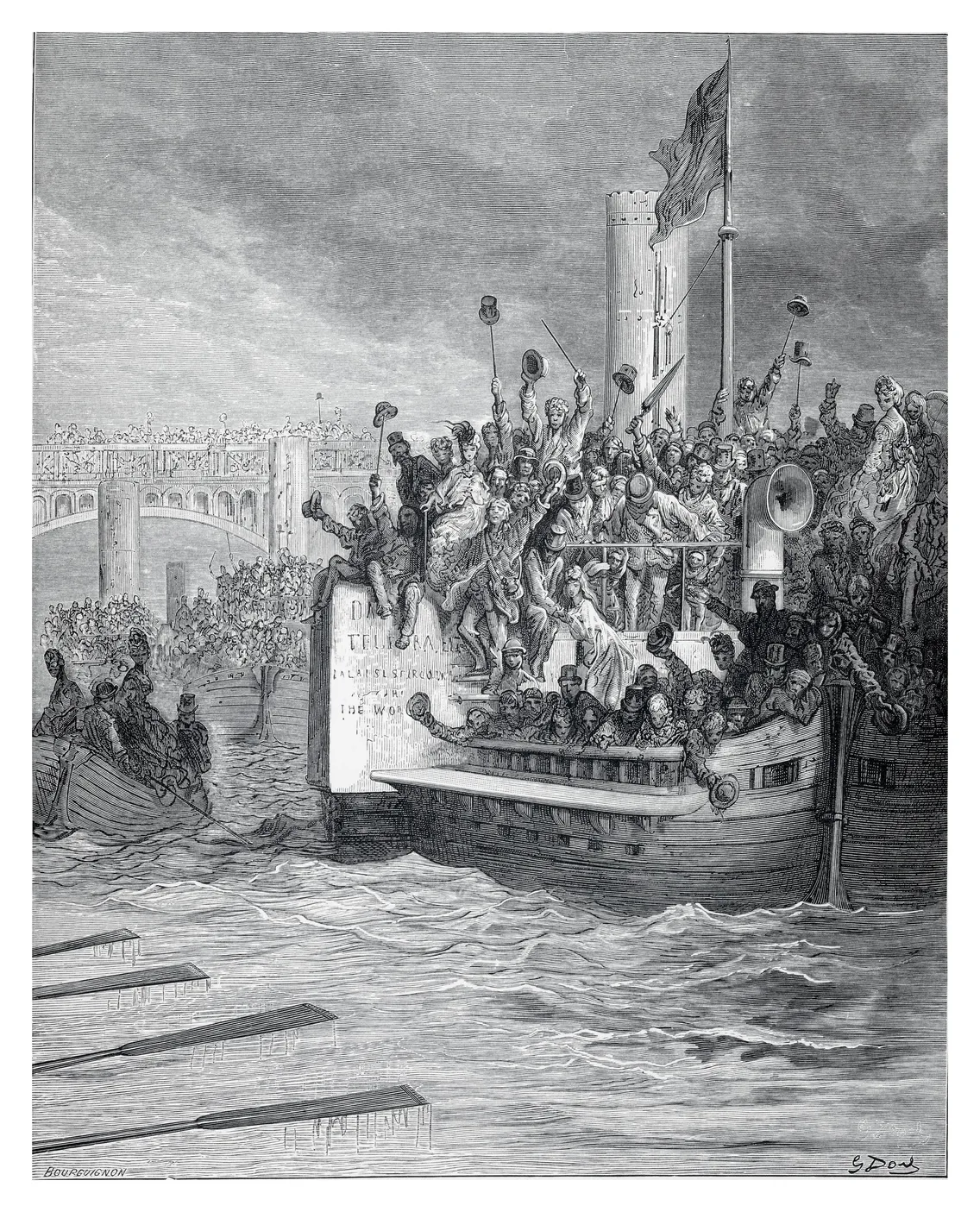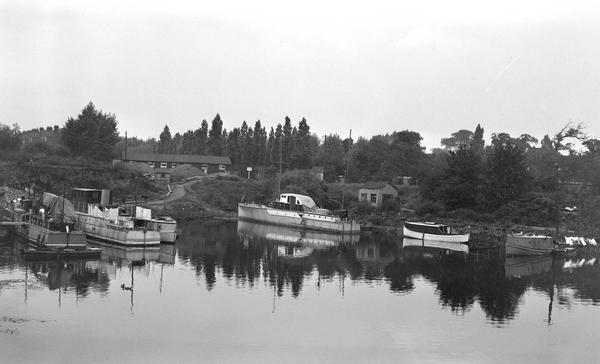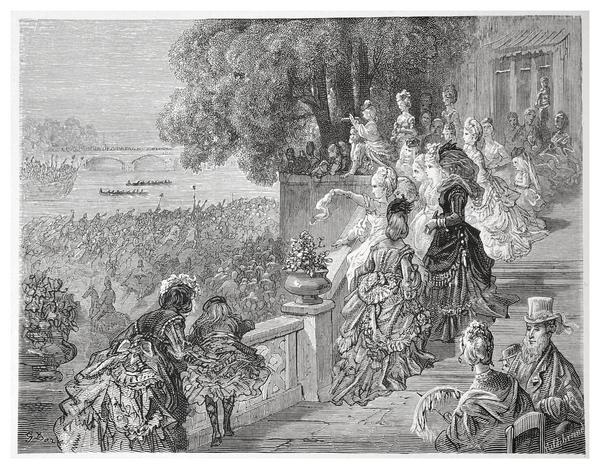Chiswick Bridge
Chiswick Bridge was built in 1933 to take road traffic between Chiswick and Mortlake. It’s a top spot to watch Oxford and Cambridge battle it out in the Boat Race.
Chiswick, south-west London
Since 1933
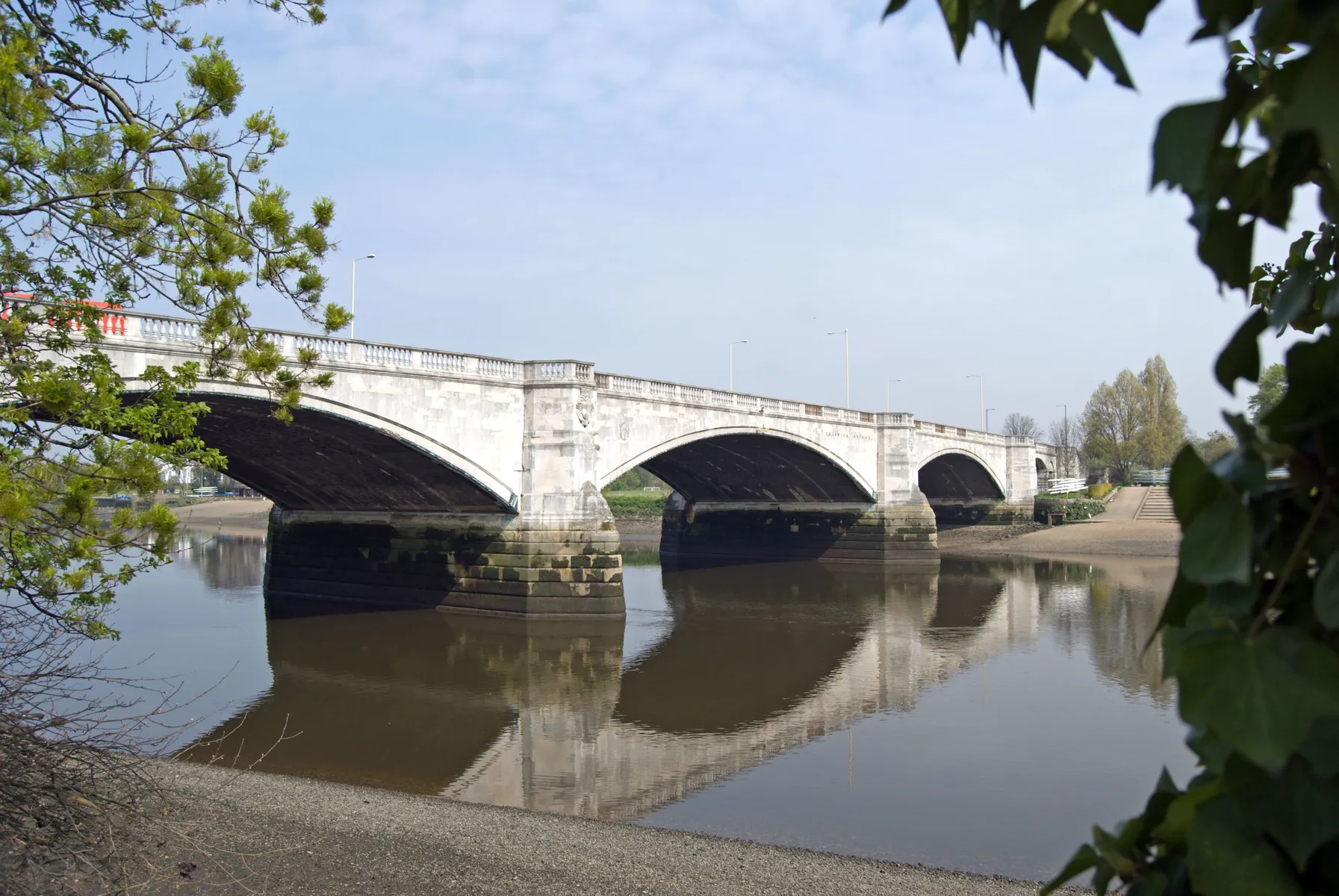
Design and construction
Skipping across the river in five arches of Portland stone, Chiswick Bridge was designed by the civil engineer Alfred Dryland, with Herbert Baker as the consulting architect.
Dryland was a pioneer in planning and constructing British motorways. And as the Middlesex county engineer during the 1920s and 1930s, he designed part of the local road network.
The bridge took around three years to build. Its construction inspired the artist Joseph Johnston Thorn to produce an atmospheric painting, which is part of our collection.
Before the bridge, a ferry connected the two sides of the river at Chiswick. A photo in our collection from 1931 shows where the ferry left the north bank.
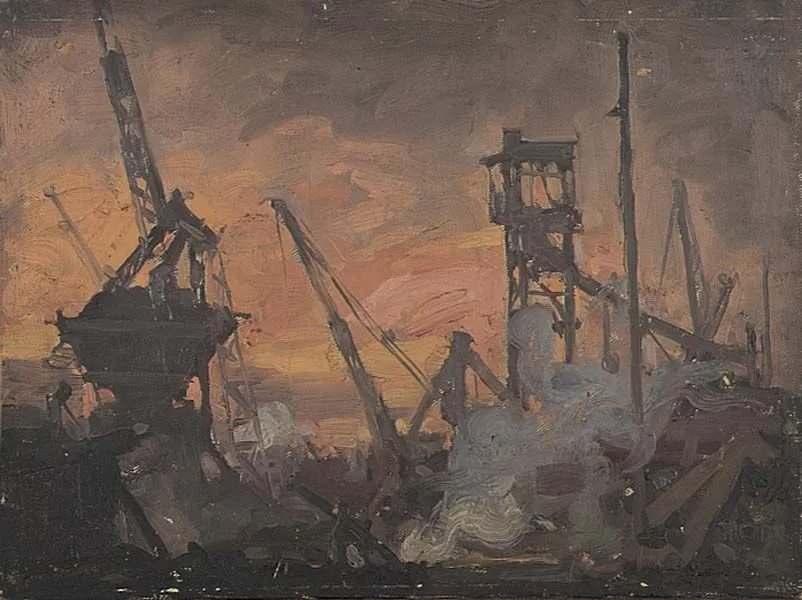
Joseph Johnston Thorn's painting of the construction of Chiswick Bridge.
“Just metres from the finishing line”
The Boat Race
The Boat Race has run along the Thames since 1829, pitting rowing crews from the Universities of Cambridge and Oxford against each other.
Since its construction in 1933, Chiswick Bridge has been just metres from the finishing line. Giving you an excellent view of the teams as they row through the final stage of the Championship Course.
A royal opening
The Prince of Wales, who later became Edward VIII, officially opened Chiswick Bridge on 3 July 1933.
Spectators who lined the streets between Chiswick and Hampton Court were disappointed by the ceremony, with local papers complaining that the royal visit had been “cut down to a minimum”.
Connections: Chiswick and Mortlake
Chiswick Bridge takes traffic from Clifford Avenue on the south side to Great Chertsey Road on the north side. It connects the boroughs of Hounslow and Richmond.
Chiswick sits on the north bank. In 1642, the English Civil War battle of Turnham Green was fought in Chiswick, preventing Charles I from entering London.
Mortlake lies to the south, with Mortlake Crematorium and Cemetery close to the river crossing. Mortlake crops up in our collection too. A book illustration from 1872 by Gustave Doré shows spectators at Mortlake watching the Boat Race.
The closest bridge to the west is Kew Railway Bridge, then Kew Bridge. To the east, it’s Barnes Railway Bridge, then Hammersmith Bridge.

